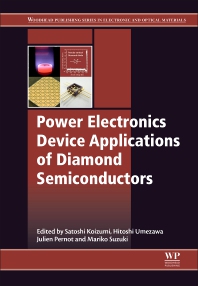Books in Physical sciences and engineering
Books in Physical sciences and engineering

Analytical Methods for Food Safety by Mass Spectrometry
- 1st Edition
- Guo-Fang Pang
- English

Nanostructured Nonlinear Optical Materials
- 1st Edition
- Rashid A. Ganeev
- English

Classical and Recent Aspects of Power System Optimization
- 1st Edition
- Ahmed F. Zobaa + 2 more
- English

Power Electronics Device Applications of Diamond Semiconductors
- 1st Edition
- Satoshi Koizumi + 3 more
- English

Elastic Wave Propagation
- 1st Edition
- Volume 35
- F. McCarthy + 1 more
- English

The Early Permian Tarim Large Igneous Province in Northwest China
- 1st Edition
- Shufeng Yang + 1 more
- English

High Mobility Materials for CMOS Applications
- 1st Edition
- Nadine Collaert
- English

Chipless RFID Reader Design for Ultra-Wideband Technology
- 1st Edition
- Marco Garbati + 2 more
- English

Nanofinishing of Textile Materials
- 1st Edition
- Majid Montazer + 1 more
- English

Cooperative and Graph Signal Processing
- 1st Edition
- Petar Djuric + 1 more
- English